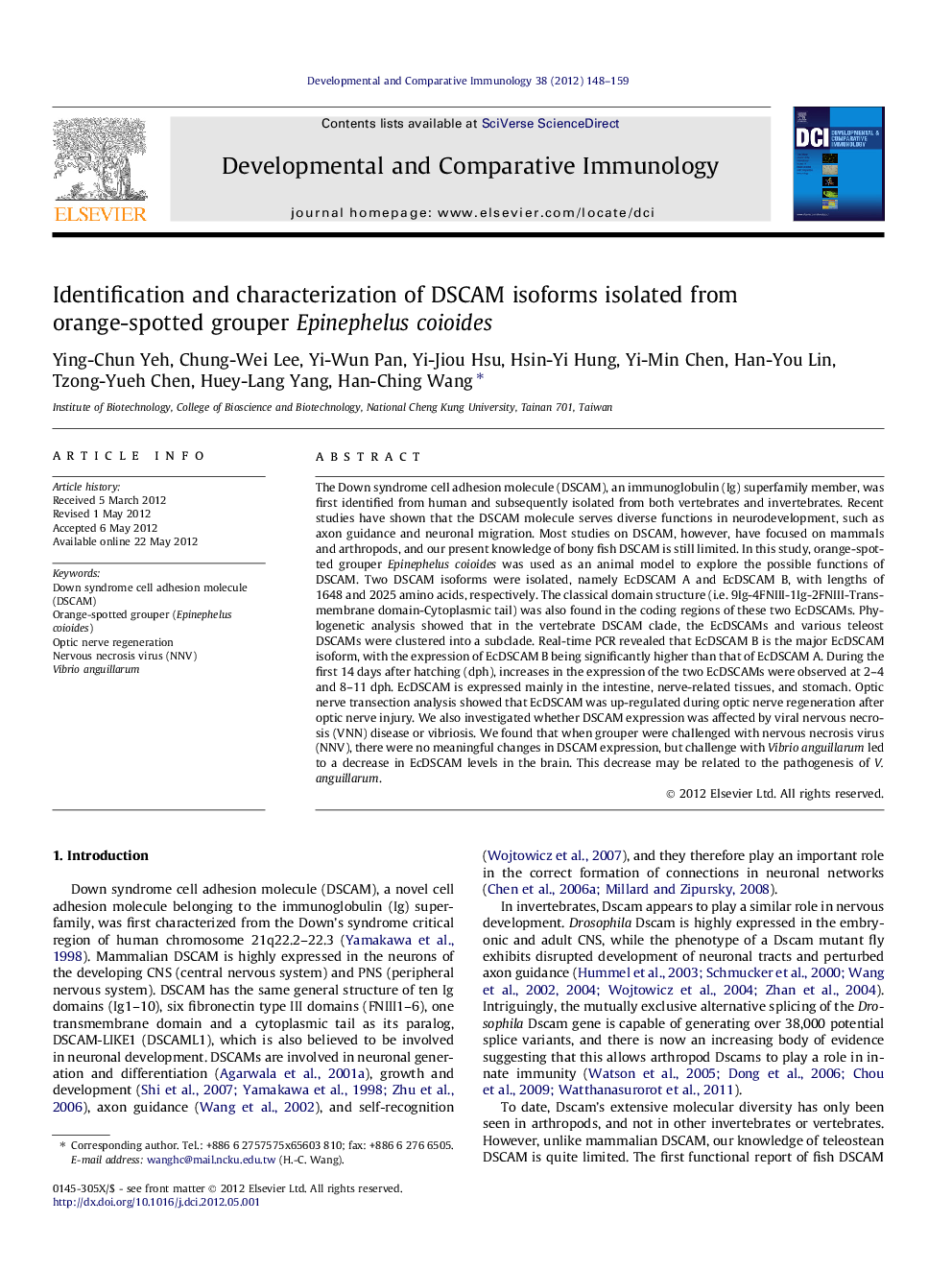| کد مقاله | کد نشریه | سال انتشار | مقاله انگلیسی | نسخه تمام متن |
|---|---|---|---|---|
| 2429526 | 1106501 | 2012 | 12 صفحه PDF | دانلود رایگان |

The Down syndrome cell adhesion molecule (DSCAM), an immunoglobulin (Ig) superfamily member, was first identified from human and subsequently isolated from both vertebrates and invertebrates. Recent studies have shown that the DSCAM molecule serves diverse functions in neurodevelopment, such as axon guidance and neuronal migration. Most studies on DSCAM, however, have focused on mammals and arthropods, and our present knowledge of bony fish DSCAM is still limited. In this study, orange-spotted grouper Epinephelus coioides was used as an animal model to explore the possible functions of DSCAM. Two DSCAM isoforms were isolated, namely EcDSCAM A and EcDSCAM B, with lengths of 1648 and 2025 amino acids, respectively. The classical domain structure (i.e. 9Ig-4FNIII-1Ig-2FNIII-Transmembrane domain-Cytoplasmic tail) was also found in the coding regions of these two EcDSCAMs. Phylogenetic analysis showed that in the vertebrate DSCAM clade, the EcDSCAMs and various teleost DSCAMs were clustered into a subclade. Real-time PCR revealed that EcDSCAM B is the major EcDSCAM isoform, with the expression of EcDSCAM B being significantly higher than that of EcDSCAM A. During the first 14 days after hatching (dph), increases in the expression of the two EcDSCAMs were observed at 2–4 and 8–11 dph. EcDSCAM is expressed mainly in the intestine, nerve-related tissues, and stomach. Optic nerve transection analysis showed that EcDSCAM was up-regulated during optic nerve regeneration after optic nerve injury. We also investigated whether DSCAM expression was affected by viral nervous necrosis (VNN) disease or vibriosis. We found that when grouper were challenged with nervous necrosis virus (NNV), there were no meaningful changes in DSCAM expression, but challenge with Vibrio anguillarum led to a decrease in EcDSCAM levels in the brain. This decrease may be related to the pathogenesis of V. anguillarum.
► Two DSCAM isoforms were isolated from orange-spotted grouper Epinephelus coioides, namely EcDSCAM A and EcDSCAM B.
► EcDSCAM may be involved in two neurodevelopmental bursts in the first months after hatching.
► Grouper EcDSCAM B may be involved in the second stage of optic regeneration, i.e. the elongation of optic axons.
► EcDSCAM is not involved in grouper response to nervous necrosis virus (NNV) challenge.
► Challenge with Vibrio anguillarum led to a decrease in EcDSCAM levels in the brain.
Journal: Developmental & Comparative Immunology - Volume 38, Issue 1, September 2012, Pages 148–159